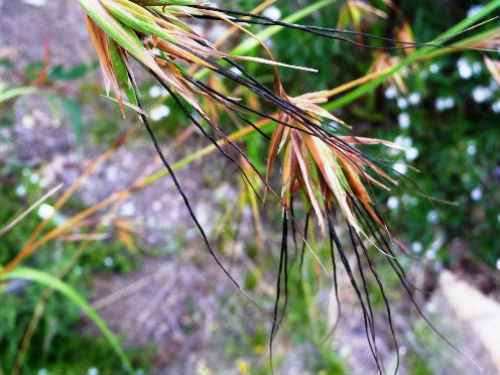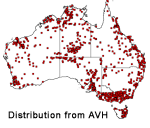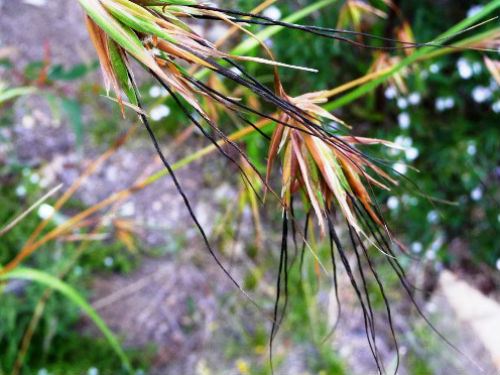
Themeda Triandra
Common name: Kangaroo Grass
I grow best: Perennial, tussock grass 1.5m
• Attracts birds, native bees and invertebrate creators
• Flowers December – February, summer
• Well drained or sandy soils
• Cultural uses
• Eastern Suburb Banksia Scrub
Looks like: Is a tufted perennial that can grow to 1.5 m tall and 0.5 m across. Its leaves are 10-50 cm long and 2-5 mm wide, green to grey drying to an orange brown in summer. The flowering period is from December to February. It produces distinct large red-brown spikelets, which occur on branched stems. Spikelets have long distinguishing spathes at their base and bare florets with black awns 4-7 cm long, which remain with the seed when it falls.
Habitat & Distribution: The species has a particularly wide distribution; in Australia it is found in all states and territories, overseas it is found in Africa, Asia and the Pacific. It commonly grows in grassland and open woodland communities.This attractive grass can be used as an ornamental in rockeries, as part of a native habitat garden or can be grown in a more formal garden for its interesting colour and texture. It grows in full sun to part shade on sandy to clay soils and needs little water once established. Because of its large distribution, growing conditions for T. triandra can be quite variable so it is best to source seeds or nursery stock native to your local area.
Kangaroo Grass can be grown from seed or by division of older clumps. Seed may be sown straight away with some success in mid summer to autumn but generally the seed has a dormancy period of up to 12 months depending on the area where it was collected. Fire or temperatures of 40–45° C may also break dormancy. Approximately 2/3 of seed collected from one inflorescence will be infertile. It is sometimes hard to distinguish fertile from infertile seeds as they both turn brown and retain their awns, but generally fertile seed is larger. If you are harvesting and sowing a lot of seed beware of the sharp callus (barb) at the base of the seed. Seed can be planted 15 mm deep or spread like mulch when the whole inflorescences are harvested. Kangaroo Grass does not transplant well but success has been achieved with square tube stock pots which air prune the roots and stop the seedlings becoming root bound. When planted out, water crystals and slow release fertiliser should be placed in the hole with the seedling, it should then be watered in well.
Themeda triandra itself is not endangered as a species it does grow in Temperate Grassland communities, which have been declared as endangered in the Australian Capital Territory and threatened in Victoria. The grasslands are under threat due to loss and fragmentation through inadequate land management practices. As Kangaroo Grass does not tolerate heavy or continuous grazing, it can be a useful indicator of the level of disturbance in an area.
Distribution:

Traditional uses: The Aboriginal people used to gather the Kangaroo Grass, separating the seeds and grinding them with stones to produce flour, make porridge and damper. Used as bush medicine, the Kangaroo Grass is chopped into small pieces and boiled in water to make a medicinal drink relieve sore throats and cure colds.

